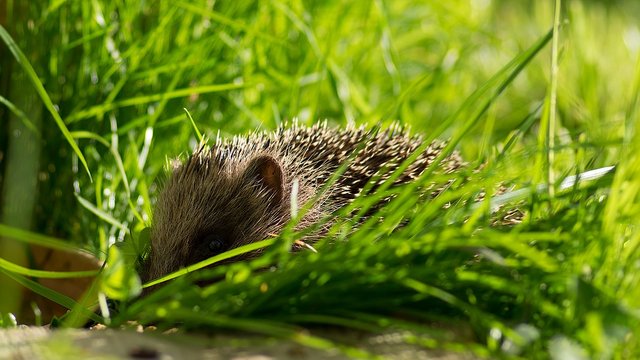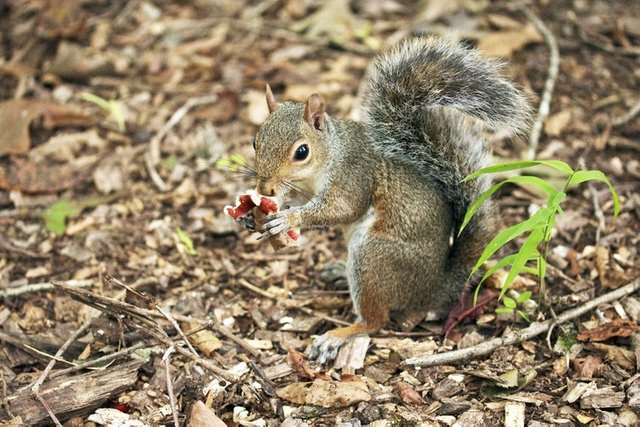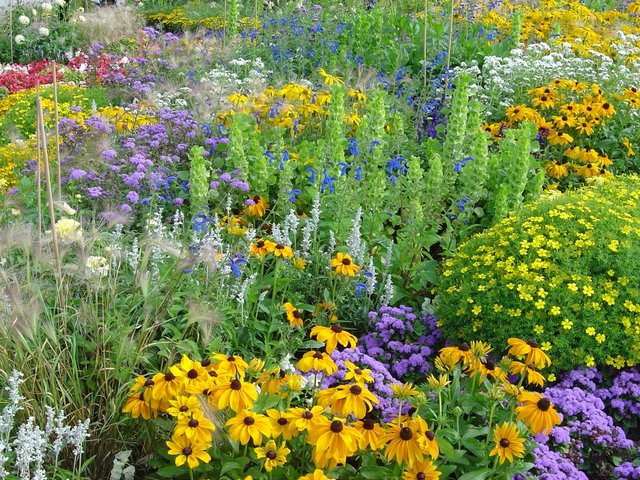Permaculture - Three ecological principles from the Gaia's Garden School: the niche, succession, and biodiversity (lesson 25)
Three ecological principles from the Gaia's Garden School: the niche, succession, and biodiversity
The Niche
It is customary to think of a garden or the cultivation of plants as an artificial environment devoid of biodiversity. Monoculture is based on this philosophy, but it also often accompanies us when establishing our home vegetable gardens. Every time mice, moles, rabbits, or other pests appear in the garden, it is considered a threat to our crops and we use poisons or pesticides to exterminate unwanted animals. However, if you think of your garden as a living organism, you will understand that this is an example of a niche or the role each organism plays in the environment.
The more we diversify the environment, the more niches will appear, often one niche leads to another. By opting for biodiversity, pests can significantly affect crops for one or two seasons, but over time their quantity will attract predators that regulate the number of pests in the environment. Ecological stability may change slightly, like in nature, when the number of predators or their prey increases and gains an advantage for a while. In a long term, however, it is unwavering as long as we do not interfere with it.
Such an approach to food production will involve minor losses in crops, but in return, we will gain much more than we lose: the time spent on growing plants will be much shorter, vegetables and fruits from our garden will be free of pesticides and other substances harmful to health, and nature around the house will come to life.
Succession
Where nature takes over from man, a race against time begins to bring the soil back to a state where it is ready to accept as much biodiversity as possible. First, grow the annual plants - herbs, weeds, designed to protect the earth from the harmful, drying effects of the sun and to draw minerals from the deeper layers of soil to the top, so that future plants can use them. What used to be a layer of humus a few centimeters thick is starting to grow and expand. If no one bothers them, after a few years the annuals are darkened by taller plants, mostly perennials. It can be tall grasses, asters, and others. Their large leaves and branched stems attract birds and insects to the garden for shelter. Biodiversity is slowly recovering. The biomass is also increasing. The transition from bare ground to annuals to perennials is called succession. If you do not disturb this process, bushes will appear in the area after a few more years, and if the amount of rainfall is adequate, a forest will grow in this place after the next few years, which will attract smaller animals.
Of course, the whole process can be brought back to an earlier phase not only by human action but by many external factors, such as fires, heat waves, frosts, and hurricanes. As global warming progresses, these events disturb the natural cycle, and it becomes more and more difficult for nature to form the natural forest biosphere.
Retraction to earlier phases can also be smaller - for example, a fallen tree in a forest reveals new space and allows sunlight to reach the lower layers of the forest, which allows herbs and plants from earlier stages to grow.
How does this relate to the garden? By maintaining lawns, much loved by many of us, we block nature from developing to a higher stage, like the forest. As a result, we invite weeds to the garden, which regularly extract nutrients from the deeper layers of the earth and prepare the soil for overgrowing with shrubs and then trees, not knowing that humans will not allow this to happen. The situation is similar to the vegetable garden, where the dug bare earth is hastily colonized with weeds so that the soil is not exposed to direct sunlight. Most of the weeds are pioneering species that feed on sunlight, which are easy to find in a vegetable garden rather than a forest, and require soil that is poor in minerals. Merely not digging the garden as a garden technique greatly reduces weed problems (no-dig method), as weed seeds rot underground. A layer of mulch often blocks the growth of weeds for similar reasons. Building organic matter in the soil is another strategy for combating unwanted vegetation (weeds die in soils with a lot of humus).
With this knowledge in hand, it is easier to understand why conventional gardens require so much effort. Meadows with flowers by the houses are the urban equivalent of the prairie, monoculture lawns with single trees - savannas. If we do not live in an area where prairies and savannas occur naturally, if our area has higher rainfall, if we do not graze animals and we do not suffer from frequent wildfires, the environment naturally tries to move from the savannah stage to the forest stage. I do not think that many yards graze gazelles or sheep, so naturally, ecological succession pushes the environment to higher stages of development, resulting in ubiquitous weeds and tree seedlings.
Biodiversity
I mentioned biodiversity when describing Niche, but also during the lesson when we were wondering together what would be better - a lawn or a meadow. I already told you then that lawns are monocultures that negatively affect biodiversity. Greengrocers can also be monocultures though. Even if we grow tens of varieties of vegetables, by concentrating vegetables of the same species in larger groups, we create small monocultures in which it is easier to spread pests and diseases.
Biodiversity should be big enough not only in the garden but in surrounding areas too. It is becoming problematic to establish your gardens in habitats surrounded by monocultures on all sides. Even if we create the most biodiverse farm, if it is around soybean crops only, our farm will not have access to wildlife because there would be no natural habitats in the district. Thus, there will be no pollinating insects in the area, no insects positively enriching the soil, etc.
Permaculture is the art of combining many functions in the garden. To enrich biodiversity, we can initiate the process of attracting beneficial insects, for example by planting bee balm. We will be taking advantage of its other functions: a pleasant aroma, the use of dried leaves as tea, and the aesthetic sensations of its flowers. Whenever we plan to use some plant in our garden, we should consider all its functions. Similarly, we can design a decorative space, utility space, and even fences (check the lesson about hedges).
All my lessons are shared totally for free with a CC-0 license (which means you can copy my text and share it wherever you want to, without the need to mark me as an author). I hope it will bring you joy.
Previous lessons can be read here:
Fertilizers
2 - types of manure and when to use it
3 - Compost. Basics
4 - advanced composting
6 - Green manure
7 - Phytosanitary plants
8 - Mineral fertilizers
--------------------------------------------------
Soil and minerals
10 - Boron, Molybdenum, Copper, Magnesium
11 - Zinc, Calcium, Iron and other elements
12 -soil components: sand and clay
14 -soil components: calcium, microorganisms, minerals
15 -soil components: water and air
--------------------------------------------------
Space
17 - Sectors in Permaculture
18 - Zones & sectors, practical use
19 - Perfect size of your garden
20 - What to choose lawn or meadow?
22 - Water reservoirs in the garden
23 - Rock Garden
24 - Patchwalks
--------------------------------------------------
Thank you for reading,
@papi.mati






Valuable information. Thanks for sharing. Greetings